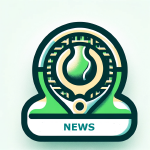The Art of Practice
The Art of Practice
The Repetition Mistake We All Make (And How to Fix It)
We get a lot of questions—and more than a few curious looks from passersby—about our unconventional training methods. Whether we’re using tennis balls, basketballs, ball cans, or other unexpected tools, people often ask: What are you working on?
Our approach uses building blocks to isolate and train various parts of the kinetic chain, helping players feel and control segments of movement that are often overlooked in more traditional training. This allows us to refine mechanics, enhance proprioception, and improve the quality of each phase of the stroke.
In many cases, these methods have evolved from pre-match locker room routines—simple, improvised drills aimed at sharpening awareness, balance, and feel just before stepping on court. Over time, we’ve brought those ideas into regular training because they serve a deeper purpose: building adaptability.
And that’s what this column is all about.
The Problem with Traditional Repetition
Most athletes have experienced the sensation of repeating a skill so many times that focus begins to fade. Instead of reinforcing technique, the repetition becomes mechanical—something the mind checks out of, even as the body goes through the motions.
This is the danger of block practice: performing the same movement in the same way, in the same context, over and over. While it may feel productive, it often leads to mental disengagement and stagnation rather than real skill development.
Wooden’s 8 Laws of Learning
John Wooden, the legendary UCLA basketball coach, once said:
“The eight laws of learning are: explanation, demonstration, imitation, repetition, repetition, repetition, repetition, repetition.”
It’s a powerful reminder of the value of repetition in mastering a skill. But repetition without variability can lead to diminishing returns.
Repetition is necessary. But for it to be truly effective, it must be paired with challenge, intention, and adaptability.
A Study in Variability
In a 2014 study by Hernández-Davo and colleagues, two groups of young tennis players practiced their serves across 12 sessions.
-
One group practiced serves in a traditional, consistent format.
-
The other group varied the task: serving from different locations, with different tosses, body positions, and orientations.
Findings:
-
Both groups increased their serve speed.
-
Only the variable group significantly improved accuracy—by approximately 18 inches closer to the target.
The takeaway is clear: variability did not undermine performance. It enhanced it.
Why This Works: Schema Theory
According to Schema Theory, the brain doesn’t develop one fixed program for each movement. Instead, it constructs a Generalized Motor Program (GMP)—a flexible blueprint that can be adapted to different conditions.
Each time an athlete encounters variation, they learn to adjust the parameters of this generalized program—such as timing, force, or trajectory—based on the situation at hand. This process, known as parameterization, is a key factor in developing adaptable and resilient skill execution.
Our training approach aligns with this framework. By using building blocks to isolate and train specific segments of the kinetic chain, we strengthen the athlete’s awareness and control over individual components of the movement. This targeted refinement allows players to understand not only what to adjust, but how to adjust under different match conditions—enhancing both the precision and adaptability of their motor programs.
Implications for Tennis Practice
Improving consistency doesn’t always mean repeating the same action in precisely the same way. More often, it involves developing a flexible, adaptive movement system—one that can respond effectively under pressure, fatigue, or varying match conditions.
Examples of effective practice variation might include:
-
Serving from different positions on the baseline or with varied toss heights
-
Groundstrokes hit from different court zones, with adjusted spacing, spin, or tempo
-
Volleys practiced at different heights or from compromised positions (e.g., off-balance, mid-recovery)
-
Footwork drills performed on unstable or changing surfaces to challenge coordination and balance
-
Ball-watching drills that emphasize early tracking, clean visual pickup, and eye discipline through contact
-
Match simulations in shifting environmental conditions (wind, sun, poor footing)
-
Occasional equipment changes, such as using a different racquet or string tension to challenge proprioception and feel
The goal isn’t to perfect every variation. Rather, it’s to enhance your ability to make real-time adjustments—developing a more stable, consistent game by strengthening your adaptability across a range of scenarios.
Match play is ultimately a test of adaptation. Conditions shift, opponents adjust, and momentum swings. The player who has only trained in predictable, controlled environments often struggles to respond. This is why the mechanically trained player—precise in practice but rigid in competition—frequently falters under pressure. Adaptability, not perfection, is what holds up when the stakes are high.
And along the way, don’t hesitate to add a little fun to the mix. Variation not only sharpens your game—it can also make training more engaging, which in turn increases the likelihood that you’ll stick with it over time.
Wrap
True consistency is not about replicating the same movement flawlessly. It’s about being able to adjust, improvise, and respond under changing conditions.
Repetition still matters—but repetition with variability is what builds a resilient, adaptable athlete.
Train with this in mind, and your game won’t just be more reliable. It will be ready for anything.





